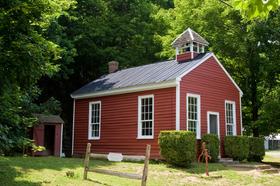Top Rankings
Flippin School District ranks among the top 20% of public school district in Arkansas for:
Category
Attribute
Student Attention
Lowest student:teacher ratio (Top 1%)
For the 2025 school year, there are 3 public schools serving 768 students in Flippin School District. This district's average testing ranking is 3/10, which is in the bottom 50% of public schools in Arkansas.
╬█╬█┬■╗ş Schools in Flippin School District have an average math proficiency score of 28% (versus the Arkansas public school average of 39%), and reading proficiency score of 31% (versus the 40% statewide average).
Minority enrollment is 8% of the student body (majority Hispanic), which is less than the Arkansas public school average of 42% (majority Black).
Overview
This School District
This State (AR)
# Schools
3 Schools
1,110 Schools
# Students
768 Students
485,111 Students
# Teachers
111 Teachers
38,779 Teachers
Student : Teacher Ratio
7:1
7:1
Student By Grade
District Rank
Flippin School District, which is ranked within the bottom 50% of all 258 school districts in Arkansas (based off of combined math and reading proficiency testing data) for the 2021-2022 school year.
The school district's graduation rate of 90% has increased from 80-89% over five school years.
Overall District Rank
#184 out of 259 school districts
(Bottom 50%)
(Bottom 50%)
Math Test Scores (% Proficient)
28%
38%
Reading/Language Arts Test Scores (% Proficient)
30%
40%
Science Test Scores (% Proficient)
35%
36%
Graduation Rate
≥90%
88%
Students by Ethnicity:
Diversity Score
0.14
0.61
% American Indian
1%
n/a
% Asian
n/a
2%
% Hispanic
3%
15%
% Black
n/a
19%
% White
93%
58%
% Hawaiian
n/a
1%
% Two or more races
3%
5%
All Ethnic Groups
District Revenue and Spending
The revenue/student of $14,622 is higher than the state median of $13,132. The school district revenue/student has grown by 18% over four school years.
The school district's spending/student of $14,569 is higher than the state median of $13,043. The school district spending/student has grown by 18% over four school years.
Total Revenue
$11 MM
$6,371 MM
Spending
$11 MM
$6,327 MM
Revenue / Student
$14,622
$13,132
Spending / Student
$14,569
$13,043
Best Flippin School District ╬█╬█┬■╗ş Schools (2025)
School
(Math and Reading Proficiency)
(Math and Reading Proficiency)
Location
Grades
Students
Rank: #11.
Flippin High School
(Math: 20-24% | Reading: 35-39%)
Rank:
Rank:
4/
Bottom 50%10
103 Alford St
Flippin, AR 72634
(870) 453-2233
Flippin, AR 72634
(870) 453-2233
Grades: 9-12
| 242 students
Rank: #22.
Flippin Elementary School
(Math: 30-34% | Reading: 25-29%)
Rank:
Rank:
4/
Bottom 50%10
209 Alford St
Flippin, AR 72634
(870) 453-8860
Flippin, AR 72634
(870) 453-8860
Grades: K-4
| 299 students
Rank: #33.
Flippin Middle School
(Math: 30% | Reading: 29%)
Rank:
Rank:
3/
Bottom 50%10
308 N First St
Flippin, AR 72634
(870) 453-6464
Flippin, AR 72634
(870) 453-6464
Grades: 5-8
| 227 students
Frequently Asked Questions
How many schools belong to Flippin School District?
Flippin School District manages 3 public schools serving 768 students.
What is the rank of Flippin School District?
Flippin School District is ranked #183 out of 258 school districts in Arkansas (bottom 50%) based off of combined math and reading proficiency testing data for the 2021-2022 school year. This district ranks in the top 20% of Arkansas school districts for: Lowest student:teacher ratio (Top 1%)
What is the racial composition of students in Flippin School District?
93% of Flippin School District students are White, 3% of students are Hispanic, 3% of students are Two or more races, and 1% of students are American Indian.
What is the student/teacher ratio of Flippin School District?
Flippin School District has a student/teacher ratio of 7:1, which is lower than the Arkansas state average of 13:1.
What is Flippin School District's spending/student ratio?
The school district's spending/student of $14,569 is higher than the state median of $13,043. The school district spending/student has grown by 18% over four school years.
Recent Articles

Segregation in K-12 Education: Colonial Era
Explore the origins of educational segregation during the colonial era and the differential treatment of Native American, African American, and white students. This article delves into the historical context, policies, and societal attitudes that shaped early education in colonial America, highlighting the disparities and injustices that persisted within the schooling systems of that time.

2011 Classroom Size Update: Are Classes Still Growing Larger?
Since the recession, public school classrooms have seen major budget cuts - and many increases in class sizes. How is the situation in 2011? Read this article to find out.

Will Single Sex Classrooms Save ╬█╬█┬■╗ş Schools?
Learn about the benefits of single sex classrooms and why public schools are hoping this type of classroom will save the American school system.





